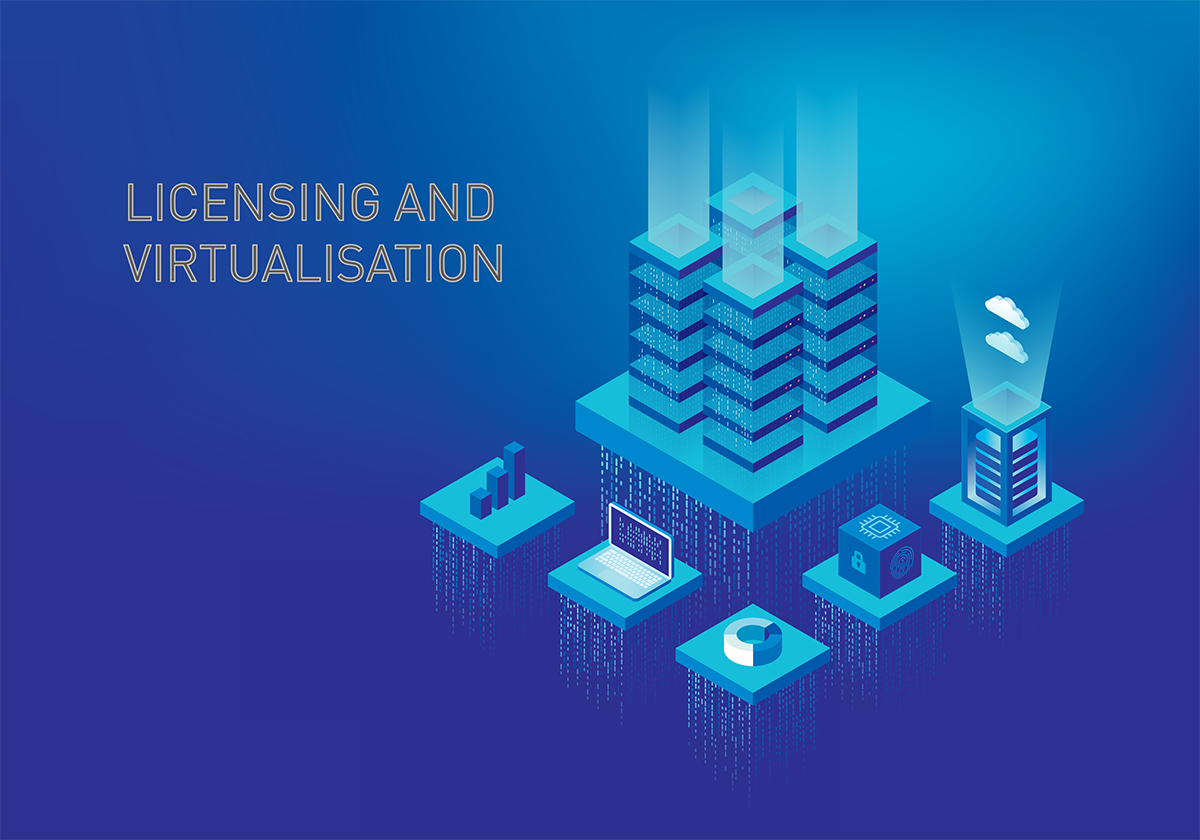
Since the very first software release, software licensing was already considered a challenge. In the past, many software licensing models were based on concurrent connections or number of installations.
Today, virtualisation and multicore CPUs add a new level of complexity, making it more difficult to track costs and how many licenses you’ll need. Let’s take a closer look at the following considerations to help you make a better decision.
Why are licenses an issue?
Virtualisation is a complex topic, but here’s a quick overview of how it works and why licensing is almost always an issue. Most people are starting to work the concept of cloud storage into their everyday lives. Think of virtualisation as a cloud where your server(s) store their hardware capabilities and your network computers can pull from that cloud as needed.
In this scenario, let’s assume employee A and employee B have two identical desktop computers with barebones hardware. Employee A needs to perform some basic text editing while employee B needs an in-depth scan of your client database. With the right infrastructure management, both employees will connect to your business’s server for the necessary physical processing power and server-hosted software. That means employee A will request the appropriate amount of processing power to edit text (which is likely very little) from the server, while employee B requests a much larger chunk of RAM, processing, and hard drive space for scanning the database.
It gets really tricky when we start asking how many licenses are required for the server-hosted software. Licensing models were originally based on the number of physical hard drives with installed copies. However, in a virtualised environment, that’s not an accurate reflection of usage. Using the most recent platforms, administrators can divide their CPU into as many virtual machines as the SMB requires.
What do current virtualised licensing models look like?
Sadly, virtualisation and software industries are still deciding on the best way to move forward. The very vendors that sell the software required to manage the creation of virtual machines and segmentation of your server disagree about which model to use.
The company behind the popular VMware software has switched to a per-virtual-machine model after a huge response from customers, while other powerhouse vendors like Oracle and Microsoft have stuck with the per-CPU-core model that is based on server hardware capacity.
In any software selection process there is almost always the option of open source software. Under the open source model there are no licenses and usage is free, and just last month, AT&T committed to virtualising 75 percent of its office under the OpenStack cloud computing platform by 2020.
What should I do?
In the end, software license considerations and total cost of ownership calculations should be a huge factor in how you plan to virtualise your SMB. When discussing the possibility of an infrastructure migration with your IT services provider, make sure to ask about the advantages and disadvantages of different virtualisation platforms compared with their licensing models. You may find that paying more for hardware-based models is worth it, or that open source platforms provide you with everything you need.
No matter which platform you choose, remember to list every piece of licensed software in your office. Find out which licenses you can keep, which ones you’ll need to update, and most importantly, what the license migration will cost you in the short and long run.
Diamond IT can help you unravel licensing
The process of virtualising your SMB alone is a real pain. Get in touch with us now to avoid the headache entirely and we’ll walk you through all of the steps necessary to guide your organisation through this next step in modernising your business model. If you need advice with licensing, give us a call on 1300 307 907 or contact us via the form below.
Published with permission from TechAdvisory.org. Source.




